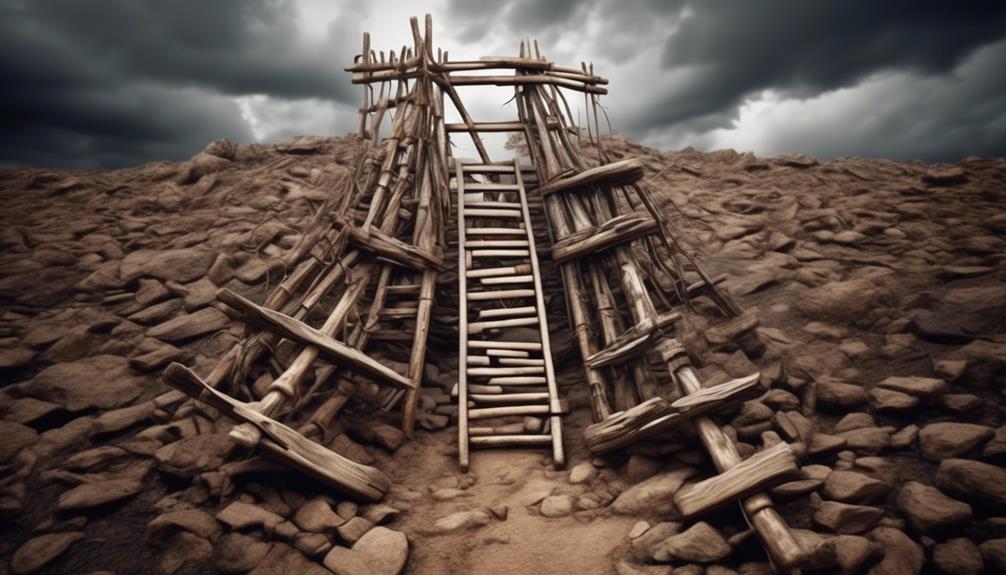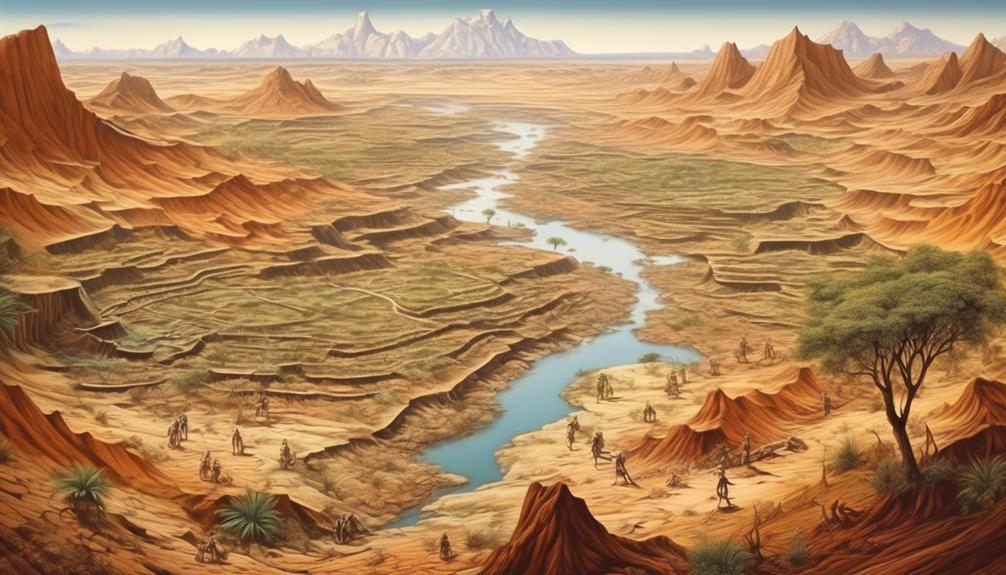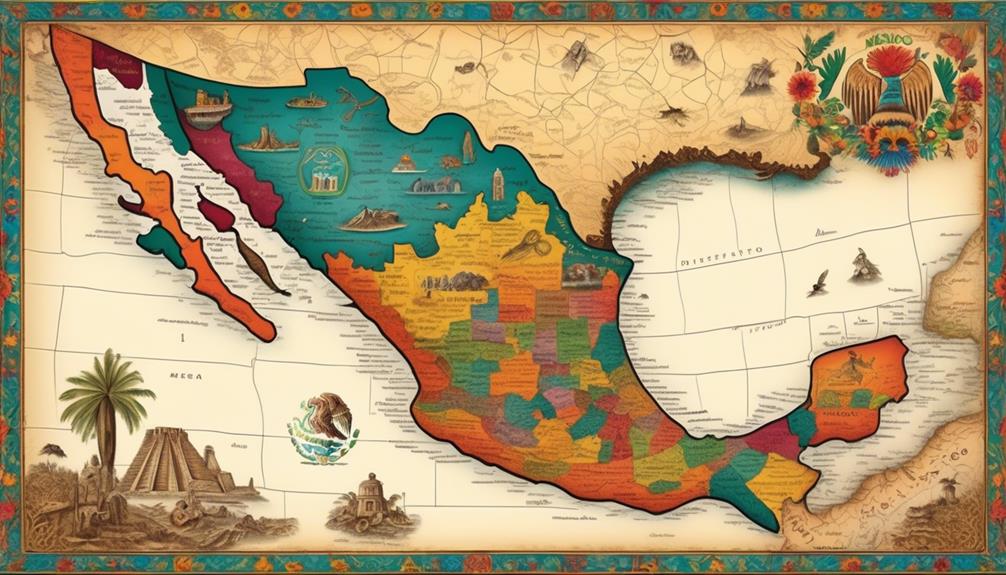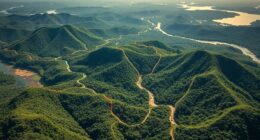We are well aware of the indigenous communities in locations such as Australia, where the Aboriginal and Torres Strait Islander peoples face disproportionate levels of poverty.
But why is this the case? There are several complex factors at play, and understanding them is crucial to addressing the issue effectively.
From historical land displacement to systemic discrimination and marginalization, the reasons behind the higher likelihood of indigenous populations being poor are deeply rooted in a myriad of interconnected issues.
Key Takeaways
- Historical injustices and land displacement have resulted in Indigenous populations struggling to maintain their traditional way of life and livelihoods, contributing to higher rates of poverty.
- Systemic discrimination and marginalization perpetuate the cycle of poverty and limited access to resources for Indigenous populations, with disparities in income, housing, and overall well-being persisting.
- Limited access to quality education and healthcare further exacerbates poverty among Indigenous communities, with insufficient resources and support available for schools and healthcare facilities.
- Economic exploitation and resource extraction on Indigenous lands contribute to poverty, as resource depletion disrupts ecosystems, labor exploitation perpetuates poverty, and environmental degradation affects Indigenous populations and contributes to climate change.
Historical Land Displacement
Historical land displacement has left Indigenous populations struggling to maintain their traditional way of life and livelihoods. The impact of colonization on these communities has been profound, as their lands were often taken without consent or fair compensation. This loss of territory has disrupted not only their physical environment but also their cultural heritage, as many Indigenous groups have deep spiritual and historical connections to the land.
The forced relocation and confinement to reservations have led to a loss of access to traditional resources such as hunting grounds, fishing areas, and medicinal plants, further exacerbating their struggle for cultural preservation.
The lasting effects of historical land displacement continue to hinder Indigenous populations' ability to thrive economically and maintain their cultural practices. The intergenerational trauma resulting from this displacement has contributed to higher rates of poverty and limited opportunities for sustainable development within these communities.
Addressing the historical injustices and supporting Indigenous land rights are crucial steps in promoting cultural preservation and empowering these populations to overcome the economic challenges they face.
Systemic Discrimination and Marginalization

The impact of colonization continues to shape the challenges faced by Indigenous populations. Systemic discrimination and marginalization persist in their struggle for economic stability and cultural preservation. Discriminatory policies implemented by governments and institutions have perpetuated the cycle of poverty and limited access to resources for Indigenous communities. These policies have created significant barriers to economic development, such as restricted access to education, healthcare, and employment opportunities.
Additionally, cultural erasure further exacerbates the marginalization of Indigenous populations. Cultural erasure refers to the systematic destruction of Indigenous traditions, languages, and practices. It contributes to the ongoing marginalization and loss of identity among Indigenous peoples.
Systemic discrimination is deeply ingrained within social, political, and economic structures. It leads to disparities in income, housing, and overall well-being. Despite efforts to address these issues, Indigenous peoples continue to face unequal treatment and limited representation in decision-making processes that directly impact their lives.
Overcoming systemic discrimination and marginalization requires a comprehensive approach. It involves addressing historical injustices, promoting inclusive policies, and empowering Indigenous communities to participate fully in shaping their own futures. By acknowledging the ongoing effects of colonialism and working towards equitable solutions, we can begin to dismantle the systemic barriers that perpetuate poverty and cultural marginalization among Indigenous populations.
Limited Access to Education and Healthcare
Limited access to education and healthcare perpetuates the cycle of poverty and hinders the overall well-being of Indigenous populations. Education inequality and healthcare disparities are significant challenges faced by Indigenous communities. The lack of access to quality education opportunities limits the ability of Indigenous individuals to acquire the skills and knowledge necessary to secure well-paying jobs, thereby perpetuating the cycle of poverty. Moreover, healthcare disparities result in inadequate medical services and resources, leading to poorer health outcomes for Indigenous populations. This exacerbates their vulnerability to economic instability and widens the gap between their well-being and that of the general population.
To depict the stark contrast in access to education and healthcare, consider the following table:
| Aspect | Indigenous Populations | General Population |
|---|---|---|
| Education Quality | Limited resources and support for schools | Well-funded educational institutions |
| Healthcare Facilities | Insufficient medical facilities and resources | Access to advanced healthcare facilities |
These disparities not only reflect the systemic neglect of Indigenous communities but also underscore the urgent need for targeted interventions to address education and healthcare inequities.
Economic Exploitation and Resource Extraction

Economic exploitation and resource extraction have significantly impacted Indigenous populations, leading to widespread social and environmental injustices. This exploitation has resulted in:
- Resource Depletion
Indigenous lands are often rich in natural resources, and the extraction of these resources by external companies has led to severe depletion. This has disrupted the delicate balance of the ecosystems that Indigenous communities rely on for their livelihoods, leading to food insecurity and loss of traditional ways of life.
- Labor Exploitation
Many Indigenous communities are forced to work in resource extraction industries under exploitative conditions. They often face low wages, dangerous working environments, and lack of labor rights. This not only perpetuates the cycle of poverty within Indigenous communities but also leads to significant health and safety risks.
- Environmental Degradation
The extraction of resources often leads to environmental degradation, including deforestation, water pollution, and habitat destruction. This not only affects the Indigenous populations directly but also has far-reaching impacts on the broader environment, contributing to climate change and loss of biodiversity.
These issues underscore the urgent need to address economic exploitation and resource extraction to safeguard the rights and well-being of Indigenous populations.
Lack of Political Representation and Advocacy
Despite facing systemic barriers, Indigenous populations continue to strive for meaningful political representation and advocacy in order to address the challenges they encounter. Political empowerment is crucial for Indigenous communities to have a voice in decisions that affect their lives. However, lack of representation in government bodies often results in policies that don't adequately address their needs. This absence of political representation also hinders the ability of Indigenous peoples to protect their lands, resources, and cultural heritage.
Community organization plays a vital role in advocating for Indigenous rights and interests. Through collective action, Indigenous groups can amplify their voices and influence policy-making processes. Grassroots movements and community-led initiatives are essential for raising awareness about the issues faced by Indigenous populations and for fostering alliances with non-Indigenous supporters. Additionally, these organized efforts can lead to the development of Indigenous political leaders who understand the unique challenges their communities face and can effectively advocate for change at local, regional, and national levels.
Frequently Asked Questions
How Have Traditional Indigenous Land Rights Been Impacted by Global Economic and Political Forces?
Globalization has significantly impacted traditional indigenous land rights. Economic and political forces have led to the exploitation and loss of ancestral lands, disrupting indigenous communities' ability to sustain themselves.
This has resulted in a loss of cultural identity, as well as economic hardships for indigenous populations. The impact of globalization on indigenous land rights has been detrimental and continues to perpetuate the cycle of poverty and marginalization.
What Are Some Specific Examples of Systemic Discrimination and Marginalization Faced by Indigenous Populations in Different Parts of the World?
Examples of systemic discrimination and marginalization faced by indigenous populations include lack of access to quality education, healthcare, and employment opportunities, as well as displacement from their ancestral lands. These injustices perpetuate cycles of poverty and limit their ability to thrive.
Discriminatory policies and practices further exacerbate these challenges, contributing to the ongoing marginalization of indigenous communities worldwide. It's crucial to address these issues and advocate for equitable treatment and opportunities for indigenous populations.
How Do Language and Cultural Barriers Contribute to Limited Access to Education and Healthcare for Indigenous Communities?
Language barriers can impede indigenous communities' access to healthcare and education, hindering their opportunities for cultural preservation. Inadequate translation services and limited resources in native languages can lead to misunderstandings and exclusion from vital services.
Cultural preservation efforts are also impacted, as traditional knowledge may not be effectively passed down due to limited educational resources. These challenges contribute to the overall marginalization of indigenous populations.
What Are Some Examples of Economic Exploitation and Resource Extraction That Have Disproportionately Affected Indigenous Communities?
Economic exploitation and resource extraction have had a disproportionate impact on indigenous communities.
For example, mining and logging often occur on indigenous lands without fair compensation, leading to environmental degradation and loss of traditional livelihoods.
These activities also disrupt cultural practices and have lasting economic consequences.
This exploitation perpetuates the cycle of poverty for indigenous populations.
How Can Indigenous Populations Overcome the Lack of Political Representation and Advocacy to Address Their Issues Effectively?
We believe that political empowerment is essential for indigenous populations to address their issues effectively.
Advocacy strategies, such as community organizing and coalition building, can amplify their voices and bring about meaningful change.
By uniting and advocating for their rights, indigenous communities can overcome the lack of political representation.
This empowerment allows them to shape policies and programs that address their unique needs and challenges, ultimately leading to greater equity and opportunity.
Conclusion
In conclusion, the indigenous populations are more likely to be poor due to historical land displacement, systemic discrimination, limited access to education and healthcare, economic exploitation, and lack of political representation.
It's time to acknowledge their struggles and work towards creating a more inclusive and equitable society for all. Let's not turn a blind eye to their plight, but rather stand in solidarity with them as we strive for a more just and equitable future.









